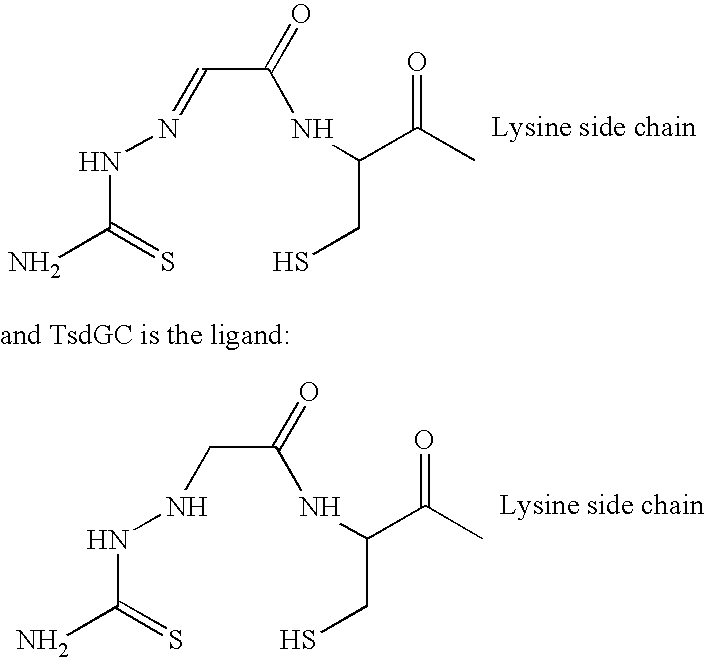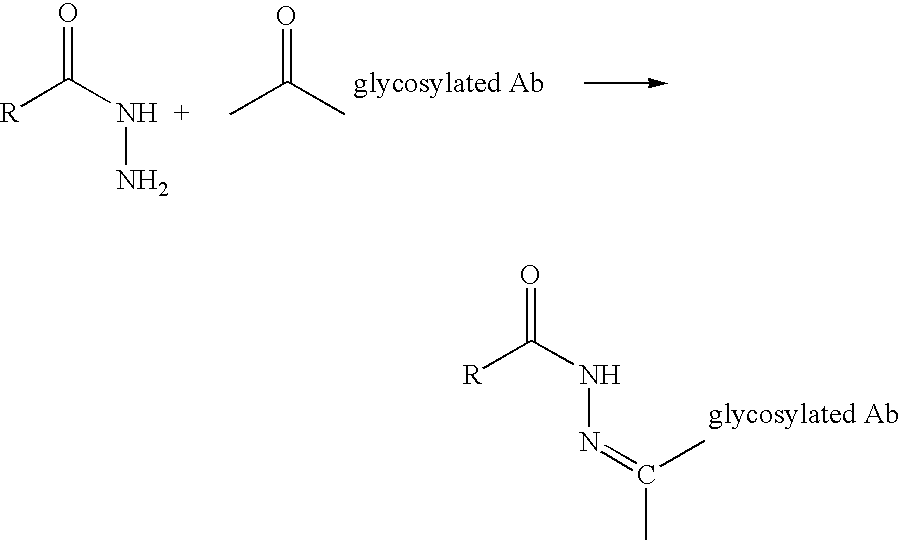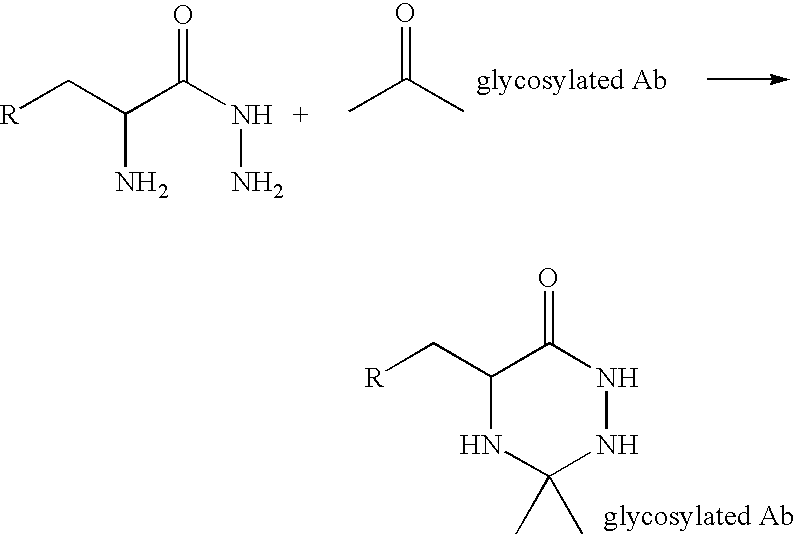Landscaped antibodies and antibody fragments for clincal use
a technology which is applied in the field of glycosylated antibodies and antibody fragments, can solve the problems of affecting the efficiency of conjugation at this site, affecting the three-dimensional structure of antibodies, and reducing the binding properties of immunoconjugates
- Summary
- Abstract
- Description
- Claims
- Application Information
AI Technical Summary
Benefits of technology
Problems solved by technology
Method used
Image
Examples
example 2
Designing and Engineering N-linked CHOs in the CH1 Domain of hLL2.
[0053] To engineer novel CHO moieties, the glycosylation acceptor sequences, Asn-X-Ser / Thr, were introduced into the Ck and CH1 domains of hLL2 by site-specific mutagenesis. Although the tripeptide sequence is necessary for directing the N-linked glycosylation in proteins, efficient glycosylation only occurs at the properly positioned acceptor. Sites were designed that are: (1) naturally found in the constant domains of other antibodies, (2) at a surface position as identified by computer modeling, or (3) randomly selected sites "evenly" dispersed along the C.kappa. and CH1 domains, in order to identify proper positions for efficient glycosylation. A total of five CH1 sites (HCN1-5) and five C.kappa. sites (KCN1-5) were designed and engineered.
[0054] Table 2 shows the positions and sequences of N-glycan acceptors in the CH1 and C.kappa. domains of hLL2. Site-directed mutagenesis was used to generate the tri-peptide ac...
example 3
Structure Determination of CHOs Associated With HCN1 and HCN=b 5 =l sites.
[0059] The structures of HCN1- and HCN5-appended CHOs were determined using FACE, which involves releasing, separating, quantifying and sequencing complex oligosaccharides from glycoproteins. N-linked oligosaccharides were released from hLL2HCN1 or hLL2HCN5 by PNGase F digestion, purified, and then labeled with fluorophore 8-aminonaphthalene-1,3,6-trisulfonic acid (ANTS) at the free reducing end. Because one molecule of ANTS attaches to one molecule of oligosaccharide, the relative amount of different CHO species can be accurately determined after fractionation in high concentration polyacrylamide gel. Qu et al., Glycobiol. 7(6): 803-09 (1997).
[0060] Heterogeneous populations of oligosaccharides were released from the F(ab').sub.2 fragments of hLL2HCN1 and hLL2HCN5. The profile of HCN5 oligosaccharides was very different from that of HCN1. For example, while N1-b was the most abundant species, accounting for 5...
example 4
Generation of Antibodies Carrying Multiple Glycosylation Sites
[0063] Using the PCR method described in Leung et al., J. Immunol. 154: 5919 (1995), the V.kappa.-N (NVT) glycosylation site is introduced to the V.kappa.-domain of an antibody with a known DNA sequence. The engineering of both the HCN1 (NSS) and HCN5 (NGT) sites into a single CH1 domain is effected by site-directed mutagenesis using the Sculptor IVM system (Amersham, Arlington Heights, Ill.). Briefly, the segment of genomic DNA encoding the human IgG1[CH1intron-hinge-intron-CH2-intron-CH3] is spliced out from the heavy chain expression vector hLL2pdHL, Losman et al., Cancer Supp. (1997), in press. Using the enzyme pair Hindlll / Eagl. The 2 kb fragment is then ligated into the corresponding cloning sites of pBlueScript SK vector (Strategene, La Jolla, Calif.). The oligonucleotide HCN1 (5'-GTG TCG TGG AAC TCA AGC GCT CTG ACC AGC GGC-3') is used to introduce a G164S (numbered according to Kabat's numbering) substitution in t...
PUM
| Property | Measurement | Unit |
|---|---|---|
| Fraction | aaaaa | aaaaa |
| Fraction | aaaaa | aaaaa |
| Fraction | aaaaa | aaaaa |
Abstract
Description
Claims
Application Information
 Login to View More
Login to View More - R&D
- Intellectual Property
- Life Sciences
- Materials
- Tech Scout
- Unparalleled Data Quality
- Higher Quality Content
- 60% Fewer Hallucinations
Browse by: Latest US Patents, China's latest patents, Technical Efficacy Thesaurus, Application Domain, Technology Topic, Popular Technical Reports.
© 2025 PatSnap. All rights reserved.Legal|Privacy policy|Modern Slavery Act Transparency Statement|Sitemap|About US| Contact US: help@patsnap.com



